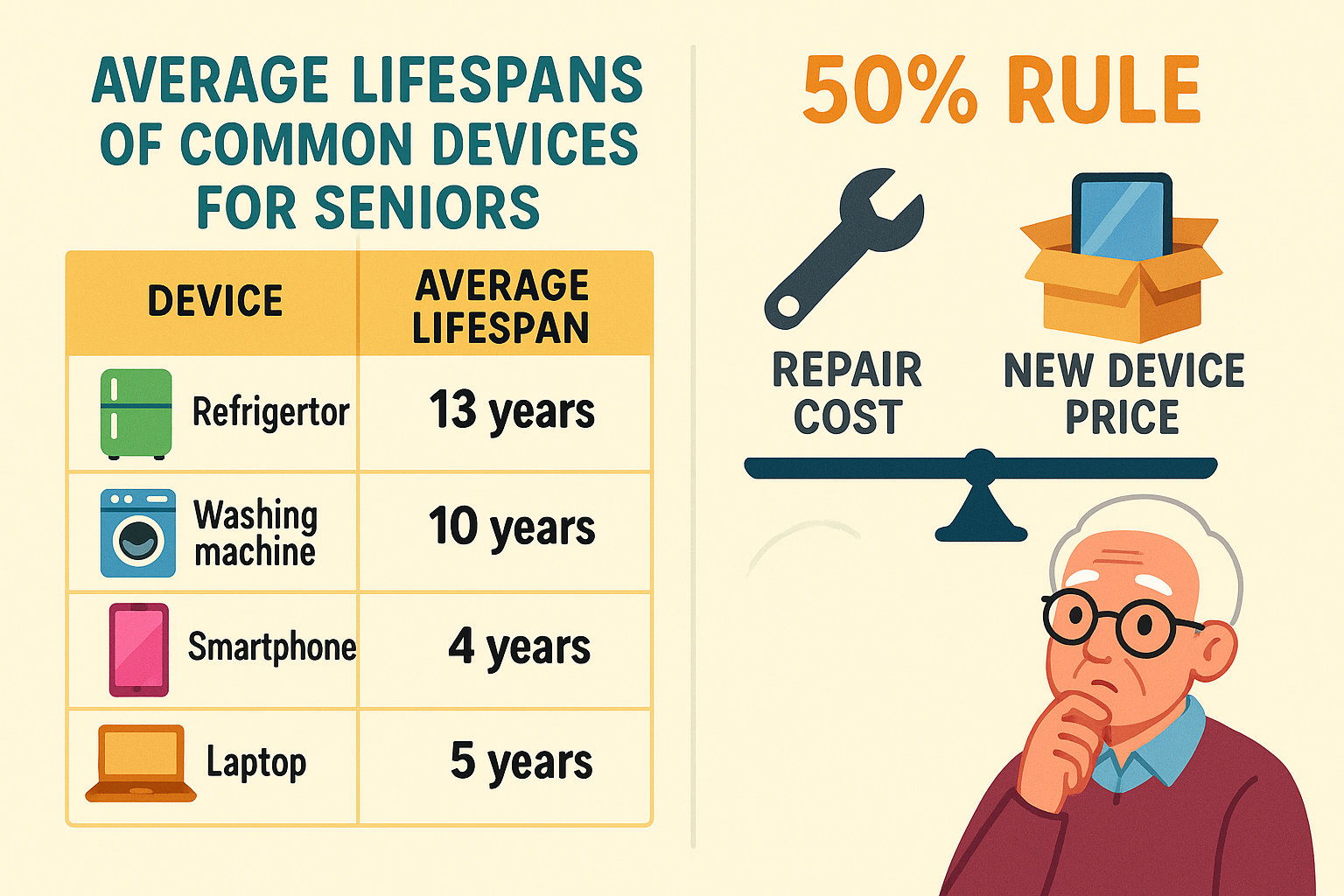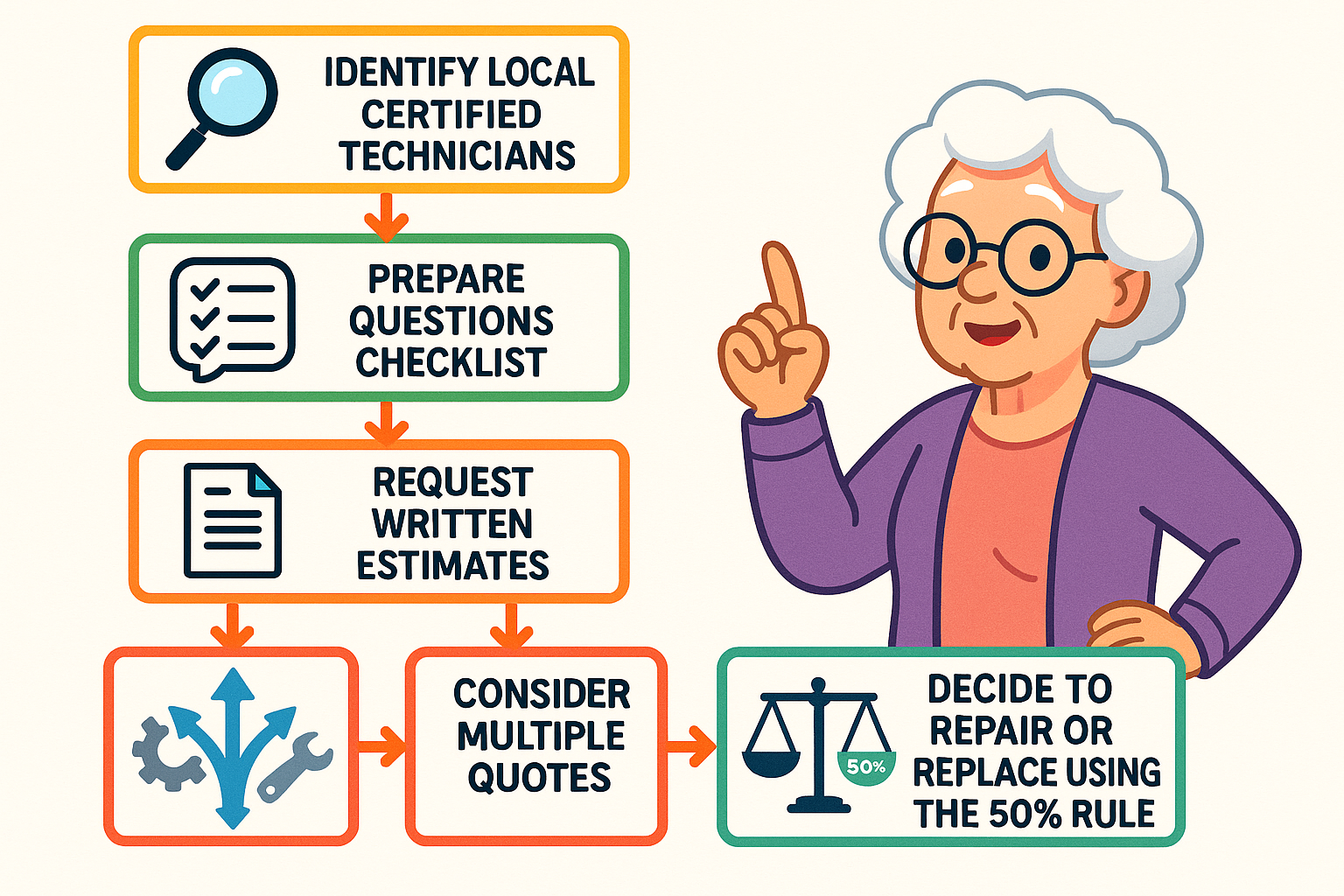
Newsletter Subscribe
Enter your email address below and subscribe to our newsletter

My old laptop, whom I’d affectionately named “Wheezy,” had a startup routine that sounded like a coffee grinder gargling gravel.
For years, we had a good thing going. But recently, opening an emailEmail, or electronic mail, is a digital communication tool that allows users to send and receive mes... More became a five-minute ordeal that gave me enough time to brew the coffee, drink it, and ponder the meaning of life.
One day, it simply gave me the digital equivalent of a blank stare.
The local computer guru looked at it, sighed the heavy sigh of a man who had seen too much, and quoted me a repair price that could have funded a small island nation.
It was that classic moment of truth we all face with our beloved, sputtering technology: do you pay to resuscitate the old friend, or is it time to pull the plug and welcome a shiny new gadget into your life?
If you’ve ever found yourself staring at a flickering screen or a silent appliance and wondering the same thing, you’re in the right place. This isn’t about complicated tech talk; it’s about making a smart decision with your money and your sanity.

Deciding whether to repair or replace a device feels like a big, confusing puzzle.
But what if I told you that you only need two key pieces of information to solve about 80% of it? Think of these as your secret weapons.
This is the golden rule of gadget wisdom. It’s beautifully simple: If a repair costs more than 50% of the price of a new, comparable device, you should replace it.
Imagine your trusty tabletA tablet is a lightweight, portable device with a touchscreen that you can use to browse the interne... More, which you bought for $300 a few years ago, stops charging.
A new, similar model costs about $350 today. The repair shop quotes you $200 to fix the charging port.
According to the 50% Rule, that $200 repair is well over half the cost of a brand-new tablet. In this case, saying your goodbyes and investing in a new one is the smarter financial move.
Every gadget has a general lifespan, just like the milk in your fridge (though thankfully, gadgets don’t start to smell).
Knowing the average life expectancy for your device gives you crucial context.
Fixing a one-year-old washing machine makes sense. Pouring money into a 14-year-old relic that’s already lived a full life? Not so much.
Here are some typical lifespans for common household items:
If your device is approaching the end of its expected lifespan, a major repair is often just a temporary patch on a sinking ship. Another problem is likely just around the corner.

The 50% Rule is a great starting point, but money isn’t everything.
Sometimes, other factors can tip the scales. Before you make your final call, grab a cup of coffee and ask yourself these five questions.
Is your computer slowing to a crawl? Does your phone battery die before lunch?
Even if a device works, it might not be working well.
If your tech is causing daily frustration and slowing you down, a replacement might be worth the upgrade in performance and peace of mind alone.
For very old or obscure models, finding replacement parts can be a real treasure hunt.
Technicians might not be able to get the parts they need, or they may have to use salvaged parts that don’t come with a warranty.
If a technician tells you parts are hard to come by, that’s a big red flag.
Older appliances, especially refrigerators and washing machines, are notoriously inefficient.
A new, Energy Star-rated model can significantly lower your monthly utility bills. The money you save on energy could help offset the cost of the new appliance over a few years.
This one is non-negotiable. An appliance with frayed wiring is a fire hazard.
A computer that’s too old to receive security updates is an open door for scammers and viruses.
If your device poses any safety or security risk, replace it immediately. It’s simply not worth the danger.
Sometimes we hold onto old devices because we know them. We know where all the buttons are, and the thought of learning a new system is exhausting.
That comfort is a real factor! But be honest with yourself. Is your familiarity keeping you from enjoying better features, faster speed, and improved security?
Okay, so you’ve decided you need a professional opinion. How do you find someone you can trust?
The key is to be an informed customer. You don’t need to know how to fix a circuit board, but you do need to know how to ask the right questions.
Start by looking for local, independent repair shops with good online reviews. Ask friends or neighbors for recommendations.
Once you have a technician looking at your device, don’t be afraid to ask for clarity.
Here’s a simple script to get you started:
A trustworthy professional will be happy to answer these questions and explain your options clearly.
If you feel pressured or confused, it’s perfectly fine to say “thank you” and get a second opinion elsewhere.

You’re now armed with all the knowledge you need. To make it even easier, here’s a quick-reference toolkit to help you make that final decision with confidence.
Ask yourself these final questions. The more you answer “yes” to, the more likely it is that you should replace your device.
It’s a simple guideline: if the cost to fix your old device is more than half (50%) of the cost to buy a new, similar one, it’s generally more economical to replace it.
This is a very important question! Most reputable phone and computer stores offer services to help you transfer your precious data—like photos, contacts, and files—from your old device to your new one. Be sure to ask about this before you buy.
Please don’t just toss it in the trash! Electronic waste contains materials that can be harmful to the environment. Many electronics stores, community recycling centers, and even some manufacturers have programs to recycle old devices responsibly and safely.
In the end, I said farewell to “Wheezy.” The repair cost was nearly 75% of a new laptop, and it was already well past its prime.
My new computer is faster, lighter, and doesn’t sound like it’s grinding up rocks for breakfast. It was the right call.
There’s no single right answer for everyone. Your decision might be different, and that’s okay.
The goal isn’t to follow a rulebook blindly; it’s to use these tools to make an informed choice that feels right for you and your budget. You’ve got this.